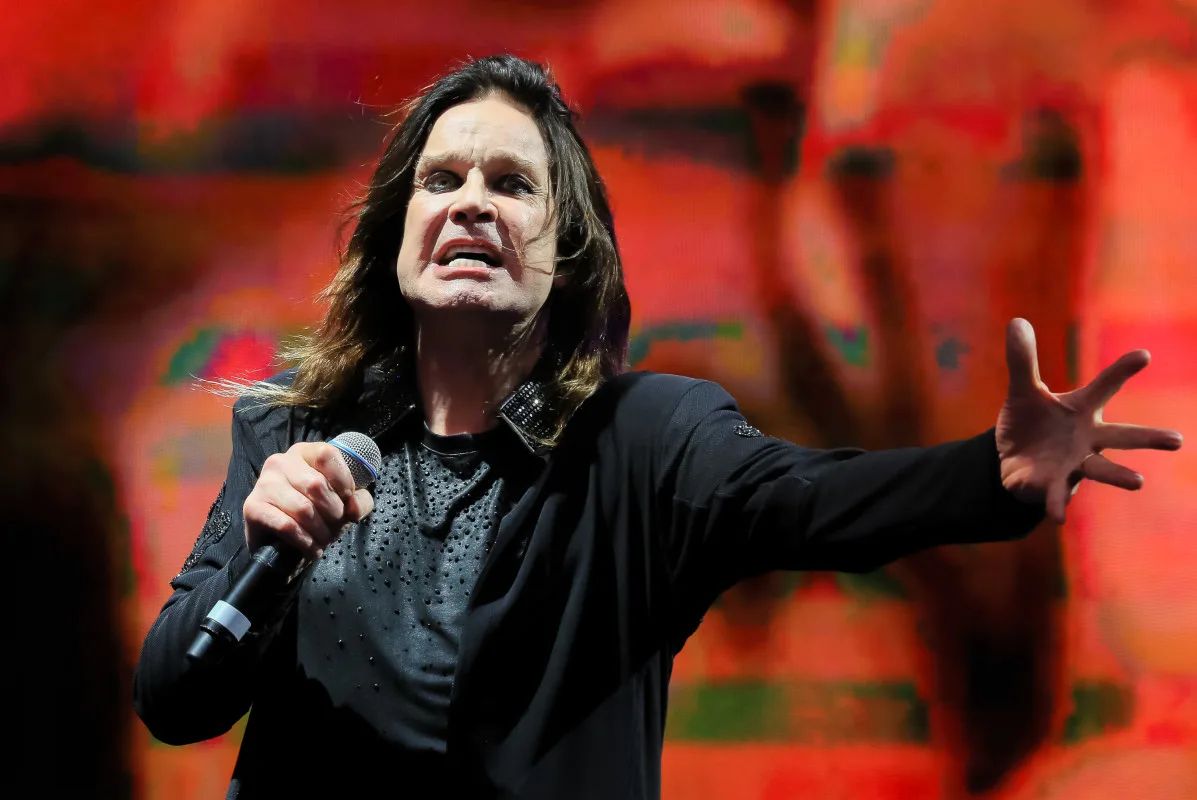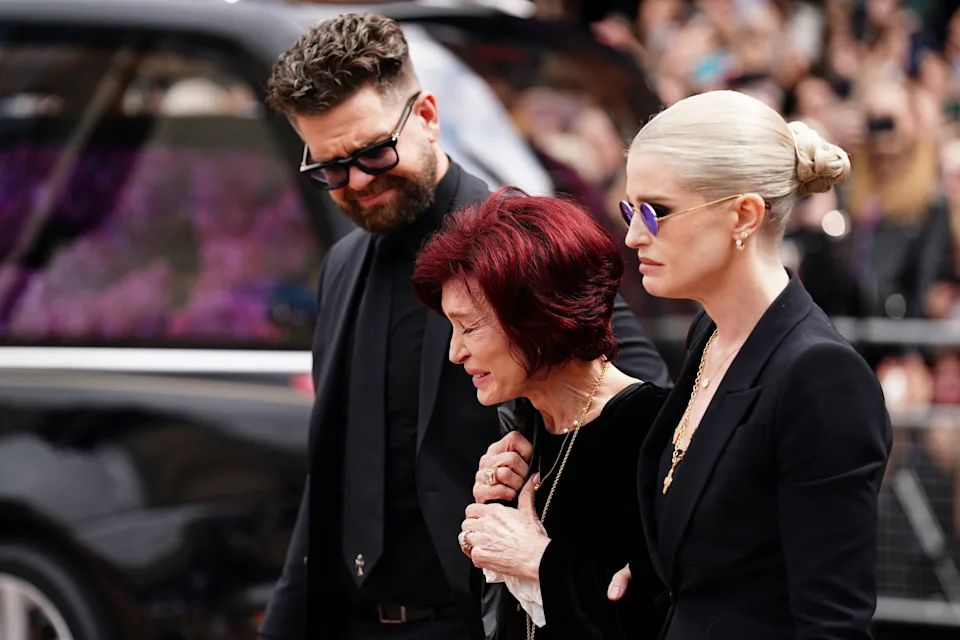There are evenings in Hollywood that feel routine, even elegant, but entirely predictable. And then there are nights when the air changes, when a room full of seasoned professionals forgets how to react, when something impossible unfolds in front of them and leaves a mark that will echo long after the lights go dark.
That was the atmosphere inside a packed Beverly Hills ballroom when a moment no one expected — and no one was prepared for — reshaped the conversation about legacy, technology, and grief.
It began with a low hum, a ripple of anticipation that moved through the audience like a quiet current. Studio executives, actors, filmmakers, and journalists leaned forward as the screen brightened with a cold, blue glow. The room settled. A shape emerged. And within seconds, the impossible became visible. Four months after his farewell service at Westminster Cathedral, Ozzy Osbourne appeared on the screen — not as archival footage, not as a tribute montage, but as a fully dimensional presence built with advanced AI, motion synthesis, and deep-creation imaging crafted for the upcoming 2026 horror epic No More Tours: The Devil’s Cut.

For a moment, no one could speak. The tilt of the head, the familiar intensity in the eyes, the characteristic half-smirk that longtime followers knew by heart — everything was there. It was not a ghost, not a replica, and not a simple simulation. It was a reconstruction so precise that it felt as though time had folded in on itself and offered a second chance at something the world believed was gone forever.
Near the center of the room, Sharon Osbourne stood completely still. She had weathered long months of public mourning, private silence, and the quiet ache of absence that arrives only after the memorials end. But nothing prepared her for this moment — the sight of her late partner resurrected by a technology powerful enough to imitate life with heartbreaking clarity. As the trailer continued, showing brief flashes of Ozzy’s digitally rebuilt performance, her breath caught. The collision of wonder and grief was immediate, overwhelming, and unmistakably human.
💬 “He was talking to me… smiling at me… like he never left,”she whispered, her voice unsteady as reporters watched without a single interruption.

While the emotional impact spread through the room, a different shock surfaced behind the scenes. Blumhouse, the studio behind the project, had reportedly secured exclusive rights to Ozzy’s voice model, image structure, and biometric archive for a staggering $250 million. The figure rippled across Los Angeles within minutes, sending agents, producers, and digital-rights attorneys into hushed conversations that lasted long into the night. This was more than a film contract; it was a blueprint for a new era of posthumous performance.
Yet beneath the financial headlines, something deeper lingered. The footage faded, the final frame dissolving into darkness, but a strange stillness continued to fill the space. It was not fear, nor disbelief, but a realization — a quiet acceptance that the world had entered a moment where legends could return not through memory, but through technology capable of shaping memory into motion.
And as the audience slowly rose to its feet, one truth settled over the room like fog drifting across an old cathedral courtyard:
Some legends do not stay buried. When the world is not ready to let them go, they find a way — in light, in sound, in digital breath — to rise again.
